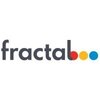Filter interviews by
TuringMinds Data Science Intern Interview Questions and Answers
TuringMinds Data Science Intern Interview Experiences
4 interviews found
I applied via Campus Placement and was interviewed in Mar 2023. There were 4 interview rounds.

It was simple aptitude test consisting topics like algebra, English, logical reasoning
(2 Questions)
- Q1. Basic coding questions and whatever is in your resume
- Q2. What is the difference between call by reference and call by value
- Ans.
Call by value passes a copy of the value while call by reference passes the address of the value.
Call by value passes a copy of the value while call by reference passes the address of the value.
Call by value does not modify the original value while call by reference can modify the original value.
Call by value is used for simple data types while call by reference is used for complex data types.
(2 Questions)
- Q1. Basic questions about future goals and your willingness to work for them
- Q2. Why do you want to pursue data science
- Ans.
I want to pursue data science because of my passion for analyzing and interpreting data to solve complex problems.
I enjoy working with data and finding patterns and insights
I want to use my skills to help businesses make data-driven decisions
Data science is a rapidly growing field with endless opportunities
I have experience in programming and statistics, which are essential skills for data science
For example, I have wo...
Interview Preparation Tips
Skills evaluated in this interview
I applied via Campus Placement and was interviewed in May 2024. There were 2 interview rounds.
Basic questions that can be solved
(2 Questions)
- Q1. Tell me about your self
- Q2. Famly background
Interview Preparation Tips
I was interviewed in Sep 2022.

It was basic aptitude test it's not that hard
(2 Questions)
- Q1. Why do you want this job
- Q2. Where do you see yourself
Interview Preparation Tips
I applied via Campus Placement and was interviewed before Jan 2023. There were 2 interview rounds.
Written test with English and numerical aptitude
(1 Question)
- Q1. Basic details and some technical questions
TuringMinds interview questions for designations
Top trending discussions






Interview questions from similar companies

I applied via Campus Placement and was interviewed in Nov 2024. There were 3 interview rounds.
There were verbal, non verbal, reasoning , English and maths questions
(2 Questions)
- Q1. Tell me about your project.
- Ans.
I worked on a project analyzing customer behavior using machine learning algorithms.
Used Python for data preprocessing and analysis
Implemented machine learning models such as decision trees and logistic regression
Performed feature engineering to improve model performance
- Q2. What programming knowledge you have ?
- Ans.
Proficient in Python, R, and SQL with experience in data manipulation, visualization, and machine learning algorithms.
Proficient in Python for data analysis and machine learning tasks
Experience with R for statistical analysis and visualization
Knowledge of SQL for querying databases and extracting data
Familiarity with libraries such as Pandas, NumPy, Matplotlib, and Scikit-learn
(2 Questions)
- Q1. Where do you stay ?
- Ans.
I currently stay in an apartment in downtown area.
I stay in an apartment in downtown area
My current residence is in a city
I live close to my workplace
- Q2. Tell me about you
- Ans.
I am a data science enthusiast with a strong background in statistics and machine learning.
Background in statistics and machine learning
Passionate about data science
Experience with data analysis tools like Python and R

I applied via Campus Placement
(1 Question)
- Q1. ML and deep learning questions
(2 Questions)
- Q1. Projects discussion
- Q2. Chatgpt architecture

Basic DSA questions will be asked Leetcode Easy to medium
(2 Questions)
- Q1. BERT vs LSTM and their speed
- Ans.
BERT is faster than LSTM due to its transformer architecture and parallel processing capabilities.
BERT utilizes transformer architecture which allows for parallel processing of words in a sentence, making it faster than LSTM which processes words sequentially.
BERT has been shown to outperform LSTM in various natural language processing tasks due to its ability to capture long-range dependencies more effectively.
For exa...
- Q2. What is multinomial Naive Bayes theorem
- Ans.
Multinomial Naive Bayes is a classification algorithm based on Bayes' theorem with the assumption of independence between features.
It is commonly used in text classification tasks, such as spam detection or sentiment analysis.
It is suitable for features that represent counts or frequencies, like word counts in text data.
It calculates the probability of each class given the input features and selects the class with the
Skills evaluated in this interview

I applied via campus placement at Chennai Mathematical Institute, Chennai and was interviewed in Dec 2023. There was 1 interview round.
(3 Questions)
- Q1. What are Large Language Models?
- Ans.
Large Language Models are advanced AI models that can generate human-like text based on input data.
Large Language Models use deep learning techniques to understand and generate text.
Examples include GPT-3 (Generative Pre-trained Transformer 3) and BERT (Bidirectional Encoder Representations from Transformers).
They are trained on vast amounts of text data to improve their language generation capabilities.
- Q2. Do you know about RAGs?
- Ans.
RAGs stands for Red, Amber, Green. It is a project management tool used to visually indicate the status of tasks or projects.
RAGs is commonly used in project management to quickly communicate the status of tasks or projects.
Red typically indicates tasks or projects that are behind schedule or at risk.
Amber signifies tasks or projects that are on track but may require attention.
Green represents tasks or projects that ar...
- Q3. Which is the best clustering algorithm?
- Ans.
There is no one-size-fits-all answer as the best clustering algorithm depends on the specific dataset and goals.
The best clustering algorithm depends on the dataset characteristics such as size, dimensionality, and noise level.
K-means is popular for its simplicity and efficiency, but may not perform well on non-linear data.
DBSCAN is good for clusters of varying shapes and sizes, but may struggle with high-dimensional d...
Skills evaluated in this interview

I applied via Campus Placement and was interviewed in Jun 2024. There were 2 interview rounds.
Some basic aptitude questions were asked , but had to be solved in 20 minutes
Medium level 2 leet code questions were asked and i cleared both

(1 Question)
- Q1. Basic python and machine learning questions
(1 Question)
- Q1. Salary expectation and working location related questions and why you want to join wipro
Interview Preparation Tips
TuringMinds Interview FAQs
Tell us how to improve this page.
TuringMinds Interviews By Designations
- TuringMinds Data Scientist Interview Questions
- TuringMinds Data Science Intern Interview Questions
- TuringMinds Machine Learning Analyst Interview Questions
- TuringMinds Analyst Interview Questions
- TuringMinds Data Science Interview Questions
- TuringMinds Data Science Engineer Interview Questions
- TuringMinds Research Analyst Interview Questions
- TuringMinds Software Developer Interview Questions
- Show more
Interview Questions for Popular Designations
- Data Scientist Interview Questions
- Data Science Engineer Interview Questions
- Senior Data Scientist Interview Questions
- Data Science Consultant Interview Questions
- Jr. Data Scientist Interview Questions
- Decision Scientist Interview Questions
- Associate Data Scientist Interview Questions
- Data Scientist Intern Interview Questions
- Show more
TuringMinds Data Science Intern Interview Process
based on 4 interviews
Interview experience
Data Science Intern Interview Questions from Similar Companies
Fast track your campus placements
TuringMinds Data Science Intern Reviews and Ratings
based on 6 reviews
Rating in categories
|
Data Scientist
144
salaries
| ₹3 L/yr - ₹8 L/yr |
|
Data Scientist Trainee
52
salaries
| ₹1.2 L/yr - ₹7 L/yr |
|
Data Science Trainee
23
salaries
| ₹4 L/yr - ₹6.3 L/yr |
|
Machine Learning Engineer
12
salaries
| ₹5 L/yr - ₹7 L/yr |
|
Data Analyst
9
salaries
| ₹4 L/yr - ₹6.5 L/yr |

Fractal Analytics

Mu Sigma

Tredence

LatentView Analytics
- Home >
- Interviews >
- TuringMinds Interview Questions >
- TuringMinds Data Science Intern Interview Questions








